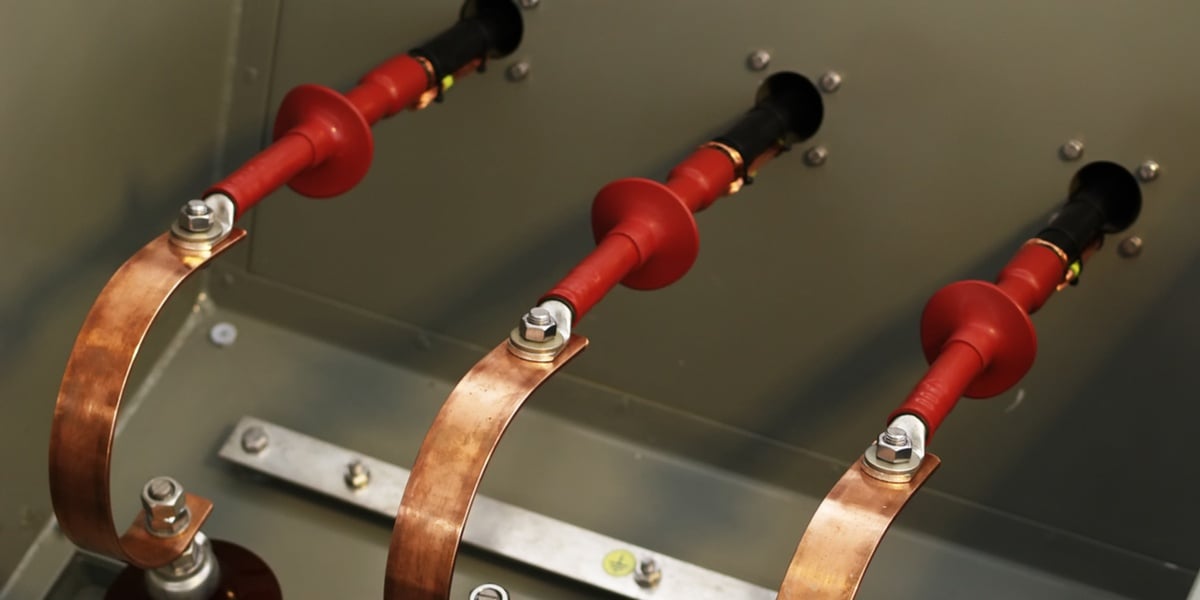3 Phase Power: Why do we use? | Three Phase Power Benefits

Most electrical appliances used in homes and businesses run with alternating current (AC), which means the voltage supplied is pulsating, unlike the constant output of a battery (direct current, DC). In the USA, the voltage supplied by utility companies has a frequency of 60 Hertz, which means it cycles between positive and negative polarity 60 times per second.
Most AC power supplies can be classified into single-phase or three-phase, depending on the characteristics of the voltage supplied. As implied by its name, a three-phase system has three separate AC voltages, each with a frequency of 60 Hz. However, these voltages alternate between positive and negative in a sequence, not simultaneously, providing a constant power supply that is not possible with a single-phase system.
Are you planning a building project? Get a professional electrical design.
How Three-Phase Power Makes Electrical Installations Cheaper
The capacity of AC power systems is measured in volt-amperes (VA), and it is calculated by multiplying voltage and current.
- For example, a 120V circuit with 20A wiring can carry 2,400 VA.
- A three-phase circuit using 20A wiring can carry 7,200 VA.
Consider that you need a neutral conductor and a grounding conductor in both cases, in addition to one live conductor for each voltage output. This means you need three wires for the single-phase system, and five wires for the three-phase system. In other words, the three-phase system has 300% the capacity of the single-phase system, while only using only two additional wires (only 67% more copper). When you consider the wiring reduction from using three-phase power in a large commercial or industrial facility, the savings are significant.
Single-phase power is normally used in residential applications, where loads are too small to justify the complexity of a three-phase system. However, the single-phase supplies for individual dwellings are normally derived from a larger-three phase system.
- Single-family homes and other small constructions get single-phase power from the three-phase distribution system owned by the utility company.
- Larger multifamily buildings normally have their own three-phase service entrance.
Performance Advantages of Three-Phase Equipment
In addition to saving on wiring, three-phase systems have notable performance advantages over their single-phase counterparts. This is especially true for electric motors:
- For a given horsepower rating, three-phase motors have superior efficiency than single-phase motors. Considering the high kilowatt-hour prices in NYC, this is a significant advantage.
- Three-phase motors also have a higher power factor, which means they draw less volt-amperes for a given load and efficiency. Some electricity tariffs include charges for deficient power factor, and three-phase motors can help reduce them.
- Since single-phase systems deliver pulsating power, motors tend to experience more vibration, while the constant supply of three-phase systems results in a more stable operation.
- Single-phase motors cannot start by themselves, requiring external devices. On the other hand, a three-phase motors can start with the power supply alone, and it can even reverse direction if you switch two conductors with each other.
A three-phase system is also more versatile than a single-phase installation. If you need to run a single-phase device with a three-phase power supply, you can use only one of the three conductors. However, there opposite does not apply: three-phase appliances cannot be operated with single-phase power. Motors are an exception: you can run a three-phase motor with a single-phase power supply, but the motor’s mechanical power is drastically reduced and its service life is shortened drastically.
Wiring Color Requirements
The National Electric Code establishes wiring color requirements for electrical systems. This makes conductors easier to identify, reducing the chance of human error and improving safety. The requirements are summarized in the following table.
|
Conductor |
Three-phase systems, |
Three-phase systems, |
|
Live conductor #1 |
Black |
Brown |
|
Live conductor #2 |
Red |
Orange |
|
Live conductor #3 |
Blue |
Yellow |
|
Neutral conductor |
White |
Grey |
|
Grounding conductor |
Green, Bare or Green & Yellow |
Green, Bare or Green & Yellow |
When a three-phase system supplies both three-phase and single-phase loads, the recommended practice is balancing the single-phase loads among the three phases. An unbalanced voltage supply can be detrimental for some types of equipment. The neutral conductor also carries a higher current when the system is poorly balanced, and this causes power loss in the form of heat dissipation.
Note that wiring is the not the only circuit element that changes between single-phase and three-phase installations. Components such as protection devices, distribution boards and transformers are also built differently. In the case of transformers, you can use three single-phase units to step a three-phase voltage up or down, but a three-phase transformer is less expensive and more compact in most cases.
An electrical design makes your building safer, while reducing your power bills. NY Engineers has completed over 1000 projects, and you can email at info@ny-engineers.com or call (786) 788-0295212-575-5300.

Michael Tobias
Michael Tobias, the Founding Principal of NY Engineers, currently leads a team of 50+ MEP/FP engineers and has led over 1,000 projects in the US
Join 15,000+ Fellow Architects and Contractors
Get expert engineering tips straight to your inbox. Subscribe to the NY Engineers Blog below.



